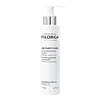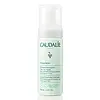What's inside
What's inside
 Key Ingredients
Key Ingredients

 Benefits
Benefits

 Concerns
Concerns

 Ingredients Side-by-side
Ingredients Side-by-side

Water
Skin ConditioningGlycerin
HumectantDisodium Cocoyl Glutamate
CleansingGluconolactone
Skin ConditioningCocamidopropyl Betaine
CleansingNiacinamide
SmoothingSodium Citrate
BufferingXanthan Gum
EmulsifyingSodium Hydroxide
BufferingPropanediol
SolventSodium Chloride
MaskingSodium Cocoyl Alaninate
Zinc Gluconate
Skin ConditioningParfum
MaskingTrehalose
HumectantUrea
BufferingCaprylyl Glycol
EmollientCitric Acid
BufferingGlycolic Acid
BufferingAzelaic Acid
BufferingMandelic Acid
AntimicrobialSucrose Palmitate
EmollientSerine
MaskingPentylene Glycol
Skin ConditioningMaltodextrin
AbsorbentBixa Orellana Seed Extract
MaskingGlyceryl Linoleate
EmollientSodium Hyaluronate
HumectantPrunus Amygdalus Dulcis Oil
Skin ConditioningAlgin
MaskingDisodium Phosphate
BufferingGlyceryl Polyacrylate
Pullulan
Hydrolyzed Wheat Flour
Skin ConditioningGlucose
HumectantPhenoxyethanol
PreservativePotassium Phosphate
BufferingPotassium Chloride
CI 61570
Cosmetic ColorantPotassium Sorbate
PreservativeCalcium Chloride
Astringent1,2-Hexanediol
Skin ConditioningMagnesium Sulfate
Glutamine
Skin ConditioningDipeptide Diaminobutyroyl Benzylamide Diacetate
Skin ConditioningSodium Phosphate
BufferingCI 19140
Cosmetic ColorantAscorbic Acid
AntioxidantSodium Acetate
BufferingTocopherol
AntioxidantLysine Hcl
Skin ConditioningArginine Hcl
Skin ConditioningAlanine
MaskingHistidine Hcl
Skin ConditioningValine
MaskingLeucine
Skin ConditioningThreonine
Isoleucine
Skin ConditioningTryptophan
MaskingPhenylalanine
MaskingTyrosine
MaskingGlycine
BufferingPolysorbate 80
EmulsifyingCystine
MaskingCyanocobalamin
Skin ConditioningGlutathione
Asparagine
MaskingAspartic Acid
MaskingOrnithine Hcl
Skin ConditioningGlutamic Acid
HumectantNicotinamide Adenine Dinucleotide
Skin ConditioningProline
Skin ConditioningMethionine
Skin ConditioningTaurine
BufferingHydroxyproline
Skin ConditioningGlucosamine Hcl
Coenzyme A
Skin ConditioningSodium Glucuronate
HumectantThiamine Diphosphate
Skin ConditioningRetinyl Acetate
Skin ConditioningInositol
HumectantNiacin
SmoothingPyridoxine Hcl
Skin ConditioningBiotin
AntiseborrhoeicCalcium Pantothenate
Riboflavin
Cosmetic ColorantSodium Tocopheryl Phosphate
AntioxidantThiamine Hcl
MaskingFolic Acid
Skin ConditioningWater, Glycerin, Disodium Cocoyl Glutamate, Gluconolactone, Cocamidopropyl Betaine, Niacinamide, Sodium Citrate, Xanthan Gum, Sodium Hydroxide, Propanediol, Sodium Chloride, Sodium Cocoyl Alaninate, Zinc Gluconate, Parfum, Trehalose, Urea, Caprylyl Glycol, Citric Acid, Glycolic Acid, Azelaic Acid, Mandelic Acid, Sucrose Palmitate, Serine, Pentylene Glycol, Maltodextrin, Bixa Orellana Seed Extract, Glyceryl Linoleate, Sodium Hyaluronate, Prunus Amygdalus Dulcis Oil, Algin, Disodium Phosphate, Glyceryl Polyacrylate, Pullulan, Hydrolyzed Wheat Flour, Glucose, Phenoxyethanol, Potassium Phosphate, Potassium Chloride, CI 61570, Potassium Sorbate, Calcium Chloride, 1,2-Hexanediol, Magnesium Sulfate, Glutamine, Dipeptide Diaminobutyroyl Benzylamide Diacetate, Sodium Phosphate, CI 19140, Ascorbic Acid, Sodium Acetate, Tocopherol, Lysine Hcl, Arginine Hcl, Alanine, Histidine Hcl, Valine, Leucine, Threonine, Isoleucine, Tryptophan, Phenylalanine, Tyrosine, Glycine, Polysorbate 80, Cystine, Cyanocobalamin, Glutathione, Asparagine, Aspartic Acid, Ornithine Hcl, Glutamic Acid, Nicotinamide Adenine Dinucleotide, Proline, Methionine, Taurine, Hydroxyproline, Glucosamine Hcl, Coenzyme A, Sodium Glucuronate, Thiamine Diphosphate, Retinyl Acetate, Inositol, Niacin, Pyridoxine Hcl, Biotin, Calcium Pantothenate, Riboflavin, Sodium Tocopheryl Phosphate, Thiamine Hcl, Folic Acid
Water
Skin ConditioningGlycerin
HumectantSodium Cocoyl Glutamate
CleansingCaprylyl/Capryl Glucoside
CleansingCocamidopropyl Betaine
CleansingCoco-Betaine
CleansingCaprylyl Glycol
EmollientCitric Acid
BufferingPotassium Sorbate
PreservativeSodium Cocoyl Isethionate
CleansingSodium Methyl Cocoyl Taurate
CleansingSodium Chloride
MaskingSodium Phytate
Butylene Glycol
HumectantChamomilla Recutita Flower Extract
MaskingLinalool
PerfumingSalvia Officinalis Leaf Extract
CleansingCitronellol
PerfumingVitis Vinifera Fruit Extract
Skin ConditioningParfum
MaskingWater, Glycerin, Sodium Cocoyl Glutamate, Caprylyl/Capryl Glucoside, Cocamidopropyl Betaine, Coco-Betaine, Caprylyl Glycol, Citric Acid, Potassium Sorbate, Sodium Cocoyl Isethionate, Sodium Methyl Cocoyl Taurate, Sodium Chloride, Sodium Phytate, Butylene Glycol, Chamomilla Recutita Flower Extract, Linalool, Salvia Officinalis Leaf Extract, Citronellol, Vitis Vinifera Fruit Extract, Parfum
 Reviews
Reviews

Ingredients Explained
These ingredients are found in both products.
Ingredients higher up in an ingredient list are typically present in a larger amount.
Caprylyl Glycol is a humectant and emollient, meaning it attracts and preserves moisture.
It is a common ingredient in many products, especially those designed to hydrate skin. The primary benefits are retaining moisture, skin softening, and promoting a healthy skin barrier.
Though Caprylyl Glycol is an alcohol derived from fatty acids, it is not the kind that can dry out skin.
This ingredient is also used as a preservative to extend the life of products. It has slight antimicrobial properties.
Learn more about Caprylyl GlycolCitric Acid is an alpha hydroxy acid (AHA) naturally found in citrus fruits like oranges, lemons, and limes.
Like other AHAs, citric acid can exfoliate skin by breaking down the bonds that hold dead skin cells together. This helps reveal smoother and brighter skin underneath.
However, this exfoliating effect only happens at high concentrations (20%) which can be hard to find in cosmetic products.
Due to this, citric acid is usually included in small amounts as a pH adjuster. This helps keep products slightly more acidic and compatible with skin's natural pH.
In skincare formulas, citric acid can:
While it can provide some skin benefits, research shows lactic acid and glycolic acid are generally more effective and less irritating exfoliants.
Most citric acid used in skincare today is made by fermenting sugars (usually from molasses). This synthetic version is identical to the natural citrus form but easier to stabilize and use in formulations.
Read more about some other popular AHA's here:
Learn more about Citric AcidCocamidopropyl Betaine is a fatty acid created by mixing similar compounds in coconut oil and dimethylaminopropylamine, a compound with two amino groups.
This ingredient is a surfactant and cleanser. It helps gather the dirt, pollutants, and other impurities in your skin to be washed away. It also helps thicken a product and make the texture more creamy.
Being created from coconut oil means Cocamidopropyl Betaine is hydrating for the skin.
While Cocamidopropyl Betaine was believed to be an allergen, a study from 2012 disproved this. It found two compounds in unpure Cocamidopropyl Betaine to be the irritants: aminoamide and 3-dimethylaminopropylamine. High-grade and pure Cocamidopropyl Betaine did not induce allergic reactions during this study.
Learn more about Cocamidopropyl BetaineGlycerin is already naturally found in your skin. It helps moisturize and protect your skin.
A study from 2016 found glycerin to be more effective as a humectant than AHAs and hyaluronic acid.
As a humectant, it helps the skin stay hydrated by pulling moisture to your skin. The low molecular weight of glycerin allows it to pull moisture into the deeper layers of your skin.
Hydrated skin improves your skin barrier; Your skin barrier helps protect against irritants and bacteria.
Glycerin has also been found to have antimicrobial and antiviral properties. Due to these properties, glycerin is often used in wound and burn treatments.
In cosmetics, glycerin is usually derived from plants such as soybean or palm. However, it can also be sourced from animals, such as tallow or animal fat.
This ingredient is organic, colorless, odorless, and non-toxic.
Glycerin is the name for this ingredient in American English. British English uses Glycerol/Glycerine.
Learn more about GlycerinParfum is a catch-all term for an ingredient or more that is used to give a scent to products.
Also called "fragrance", this ingredient can be a blend of hundreds of chemicals or plant oils. This means every product with "fragrance" or "parfum" in the ingredients list is a different mixture.
For instance, Habanolide is a proprietary trade name for a specific aroma chemical. When used as a fragrance ingredient in cosmetics, most aroma chemicals fall under the broad labeling category of “FRAGRANCE” or “PARFUM” according to EU and US regulations.
The term 'parfum' or 'fragrance' is not regulated in many countries. In many cases, it is up to the brand to define this term.
For instance, many brands choose to label themselves as "fragrance-free" because they are not using synthetic fragrances. However, their products may still contain ingredients such as essential oils that are considered a fragrance by INCI standards.
One example is Calendula flower extract. Calendula is an essential oil that still imparts a scent or 'fragrance'.
Depending on the blend, the ingredients in the mixture can cause allergies and sensitivities on the skin. Some ingredients that are known EU allergens include linalool and citronellol.
Parfum can also be used to mask or cover an unpleasant scent.
The bottom line is: not all fragrances/parfum/ingredients are created equally. If you are worried about fragrances, we recommend taking a closer look at an ingredient. And of course, we always recommend speaking with a professional.
Learn more about ParfumPotassium Sorbate is a preservative used to prevent yeast and mold in products. It is commonly found in both cosmetic and food products.
This ingredient comes from potassium salt derived from sorbic acid. Sorbic acid is a natural antibiotic and effective against fungus.
Both potassium sorbate and sorbic acid can be found in baked goods, cheeses, dried meats, dried fruit, ice cream, pickles, wine, yogurt, and more.
You'll often find this ingredient used with other preservatives.
Learn more about Potassium SorbateChances are, you eat sodium chloride every day. Sodium Chloride is also known as table salt.
This ingredient has many purposes in skincare: thickener, emulsifier, and exfoliator.
You'll most likely find this ingredient in cleansers where it is used to create a gel-like texture. As an emulsifier, it also prevents ingredients from separating.
There is much debate on whether this ingredient is comedogenic. The short answer - comedogenic ratings don't tell the whole story. Learn more about comegodenic ratings here.
The concensus about this ingredient causing acne seems to be divided. Research is needed to understand if this ingredient does cause acne.
Scrubs may use salt as the primary exfoliating ingredient.
Learn more about Sodium ChlorideWater. It's the most common cosmetic ingredient of all. You'll usually see it at the top of ingredient lists, meaning that it makes up the largest part of the product.
So why is it so popular? Water most often acts as a solvent - this means that it helps dissolve other ingredients into the formulation.
You'll also recognize water as that liquid we all need to stay alive. If you see this, drink a glass of water. Stay hydrated!
Learn more about Water